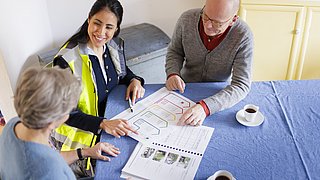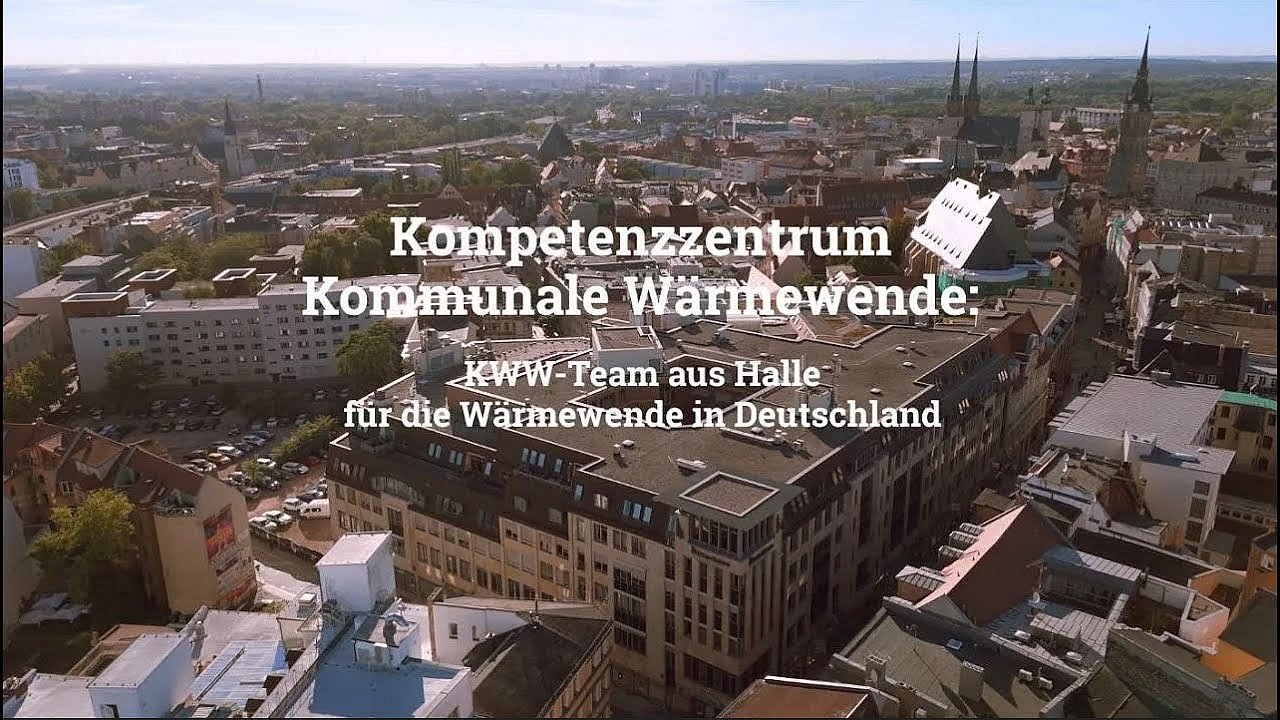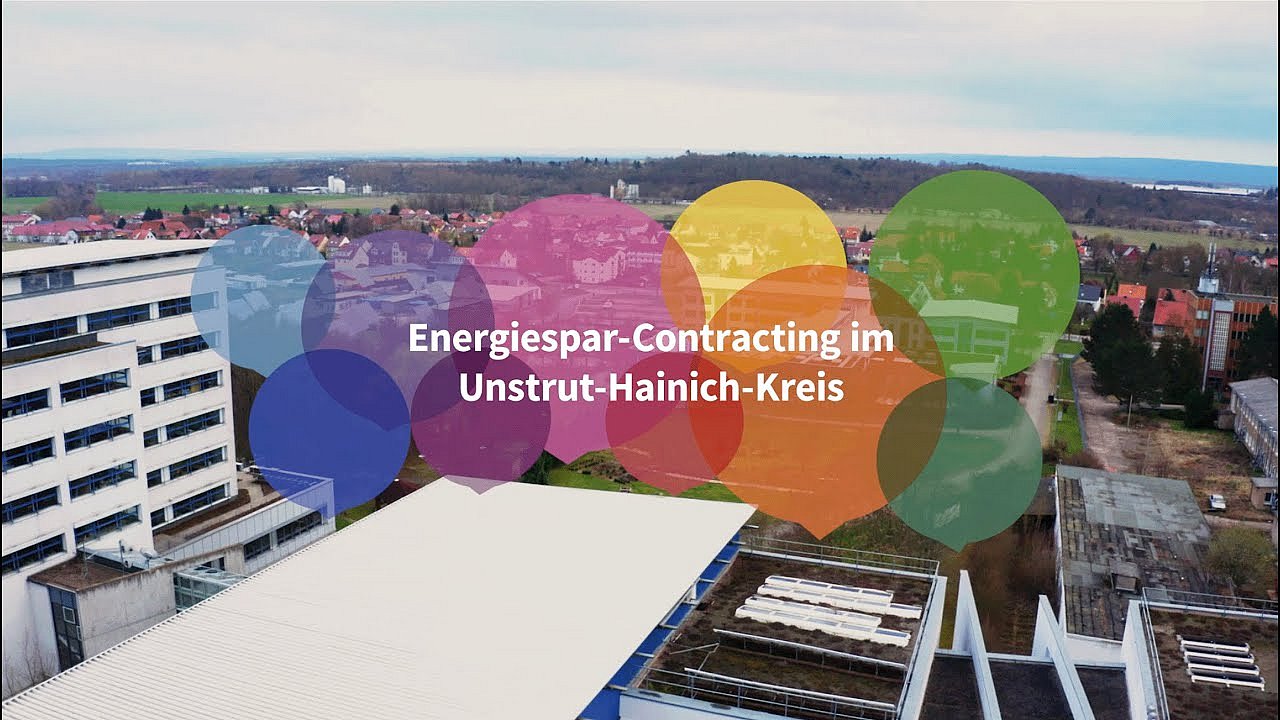
Redesigning buildings and local spaces
The heating transition is essential for the transformation, whether in individual buildings, in neighbourhoods or in municipalities.
A central component with great potential for achieving climate neutrality by 2045 will be the transformation of the building sector. This is where most carbon emissions are generated, and this is where society as a whole is called upon to act. What measures can accelerate the transformation? What are the benefits of analysing neighbourhoods? How can local authorities solve the enormous tasks facing them? dena supports the German federal government in numerous projects in an effort to find answers to these questions.
Buildings
The building sector accounts for around 40 per cent of carbon emissions in Germany. For this reason, in order to achieve the goal of climate neutrality by 2045, it is necessary to start directly with the buildings. A large portfolio of solutions is available for this purpose: from energy efficiency and energy-efficient refurbishments to the targeted use of renewable energies and digital technologies, right through to resource-friendly, sustainable construction.
No energy transition without the heating transition
The German Buildings Energy Act (Gebäudeenergiegesetz, GEG) sets the framework for increased heating with renewable energies instead of coal, oil or natural gas. Since 1 January 2024, every new heating system installed in newly built developments must use at least 65 per cent renewable energy; for existing buildings, the law will come into effect later. In both existing and new buildings, heat pumps will replace fossil-fuelled heating systems in detached and semi-detached houses. Heat pumps play a decisive role in achieving climate protection targets.
Energy efficiency through digitalisation
Digital solutions in the building sector make it easier to use energy more efficiently. Heating management becomes more effective with the intelligent networking of presence and motion detectors with the heating control system. Heating systems can use learning algorithms and weather data to create precise heating load forecasts enabling them to generate heat on demand. Digital technologies allow operating processes to be monitored around the clock, for example, by actuators and pumps. What’s more, sector coupling and the combination of different technologies in buildings are also easier when digital solutions are implemented, opening up potential for energy savings.
Effective consulting

Around 63 per cent of residential buildings in Germany were built before the country’s first Thermal Insulation Ordinance (Wärmeschutzverordnung) came into force in 1979. The efficiency potential is particularly high in this area. Older residential buildings consume up to five times more energy than buildings constructed after 2001, which have an average energy consumption of around 85 kilowatt hours per square metre per year (kWh/m²a).
Anyone who wants to build or refurbish in an energy-efficient and sustainable way requires the help of qualified energy-efficiency experts. They ensure the quality of energy-efficiency and sustainability measures in buildings and support applicants in the funding process. After all, even small inaccuracies in the planning or construction phase can result in the expected savings not being achieved, meaning that the associated subsidies cannot be paid out. One alternative is an individual refurbishment roadmap (iSFP) for residential buildings.
Serial refurbishment
The energy-efficient refurbishment of existing buildings is essential in order to achieve climate neutrality. However, in Germany, the refurbishment rate is only around one per cent. It would need to be at least twice as much in order to achieve a climate-neutral building stock by 2045. This is where serial refurbishment based on the ‘Energiesprong’ concept can act as an accelerator, because this innovative approach simplifies processes and improves potential for cost reduction. The concept originated in the Netherlands and is successfully being used in several countries across Europe. Pilot projects and the first serial refurbishment projects are being realised in Germany. They deliver promising results, and the market for these solutions is growing dynamically.
Climate-neutral neighbourhoods
Another building block for climate neutrality is the interaction of buildings and infrastructure in a neighbourhood. In the past, the development of neighbourhoods focused primarily on urban planning and social aspects. This focus has been expanded to include energy and heating networks, local sector coupling and climate impact adaptation. This is because key decisions on the design of the future energy system are made at the local level. It is about the necessary infrastructures, available energy sources and the stakeholders involved. A comprehensive approach is required when considering the neighbourhood level: this includes energy requirements and possible generation capacities, the networking of residential and non-residential buildings, public institutions, undeveloped spaces, industry, trade and local transport infrastructure.
Renewable heat in the neighbourhood
The neighbourhood approach can be used to convert the heating supply of buildings to renewable energies. Various supply options were developed for four types of housing complexes using neighbourhood approaches based on local heating as part of the Climate-neutral Building Forum. Different supply options and heat sources were analysed.
Heating networks
Key to achieving climate neutrality is the transformation of existing neighbourhoods, in addition to individual buildings. An important strategy on this path is the new construction of heating networks and the expansion of existing ones. These infrastructures can utilise the climate-neutral potential of local heating options and integrate electricity from renewable energies into the energy system, such as the targeted utilisation of waste heat, the integration of locally generated renewable energies or solutions that benefit the system such as power-to-heat. Heating networks are the basis for integrating various power generation technologies such as fuels and for sector coupling.

Municipal heating planning

Heat cannot be transported over long distances, as the losses would be too high. For this reason, local and individual solutions are needed to achieve the transformation in the heating supply. A strategy that identifies specific implementation measures to cover heating requirements with renewable energies – municipal heating planning – is the prerequisite for this.
An urban planning task of this magnitude initially seems almost impossible in times of staff shortages and scarce resources. However, municipal heat planning brings great added value in the long term. Switching to renewable energy sources makes municipalities independent of fossil fuel imports and offers them long-term security of supply. Utilising local resources and involving regional companies creates planning security for public and private investments. This benefits the energy supply companies and the skilled trades locally. Trailblazers have a competitive advantage when it comes to decisions on where to locate and make an essential contribution to the task of providing city services of public interest. The instrument offers homeowners more planning options for how they can heat their homes in the future.

Municipalities lead the way
The energy transition and climate protection work locally in numerous practical applications in municipalities. What counties, towns and villages achieve in concrete terms can serve as a model and an incentive for the local community and economy. Local authorities set a good example by reducing energy consumption in public buildings and properties. By spending less on energy, they relieve the burden on public budgets.
Cooperation with private service providers
Many local authorities are taking responsibility for the energy transition and climate protection. They set themselves ambitious climate targets, often exceeding the federal targets. Proof of their great commitment includes municipal climate protection plans, master plans for energy, heating concepts, mobility concepts and more than 18,000 municipal climate protection projects in Germany.
Local authorities are well-versed in collaboration and are able to utilise the advantages of it. They involve external service providers, for example, in order to accelerate refurbishments for greater energy efficiency and increase their numbers. These service providers can bundle and scale the expertise they have gained from working together. It puts them in a position to assume implementation and operational risks. The situation is similar with the results and savings guarantees given by private service providers in energy performance contracting. This allows local authorities to significantly increase investment and realise more measures without overburdening their own budgets.
Savings potentials at municipal level
- There are 186,000 public buildings in Germany
- 176,000 of them are managed by local authorities
- Local authorities in Germany pay €4 billion per year to heat and provide electricity to their properties
